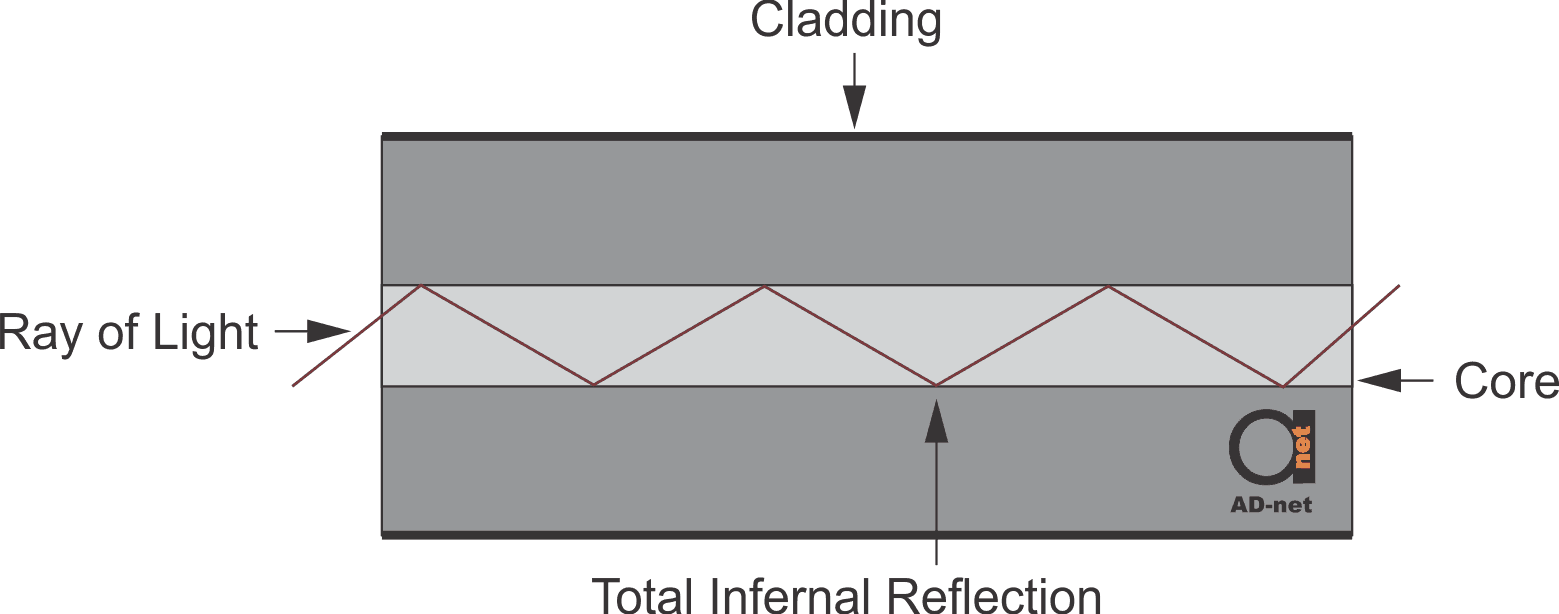Basic Considerations of Light Travelling through Optical Fiber
In this article you will find the basic considerations that apply to the transmission of light through a fiber. We can grasp the phenomenon better if we take a look and check any potential outputs when a ray of light transmits through a channel.
- Reflection-– This actually any alteration in the orientation of a light ray as it travels from one channel to the other
- Refraction–the bending degree of a light ray as it travels from one clear channel to another
- Absorption–the total attenuation of the received ray of light (transformed into heat source)
- Scattering— The allocation of the ray that enters into various orientations
The Refractive Index (RI) of a medium refers to the measuring of the reduction of speed of the light when traveling through the medium.
Here is an example:
If a medium has an RI of 2, a ray of light that transmits through the medium, based on this measurement, it would transmit at a ½ (0.50) times the rate inside the air.
The angle of incidence (Φi) refers to the deviation angle between a ray incident on a flat surface and the line at a right angle to the surface at incident spot of the medium.
The travel of a ray light through the optical fiber is attributed to the aspect of Total Internal Reflection (TIR), which is built upon Snell’s principle which measures the effect on light incidence on media.
According to this principle, the angle where light is reflected depends on the Refraction Index of the two mediums examined. In optics, these mediums are optical fiber’s core and cladding. The smaller the RI of the cladding (compared to the core), the more light is reflected into the core. You can see a graphic illustration of this in image 1.
Due to this effect, the ray of light is impossible to transmit through the cladding and is kept into the core which it raises because of the repeated reflection times inside the core.

Image 1– How light travels through a FOC
An additional yet vital aspect that helps with the traveling of light through an optical fiber is the Φc angle. The parameters that follow illustrate the connection between a critical angle and an angle of incidence:
- If the angle of incidence is smaller compared to the critical angle, the ray of light that occurs on a fiber’s core will be refracted through the cladding.
- If the angle of incidence is the same as the critical angle, the ray of light inside the fiber’s core will travel through core’s junction as well as cladding and get absorbed immediately.
- Additionally, if the angle of incidence is the same as the critical angle, the ray of light inside a fiber’s core will be totally reflected and spread through the optical fiber.


